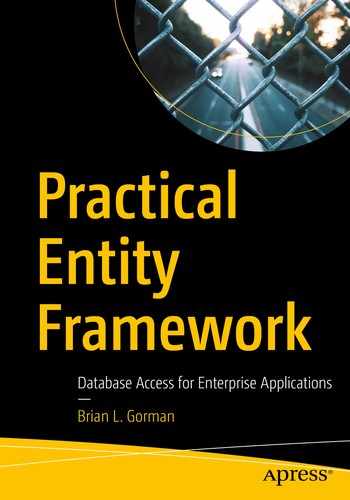0%
22Chapters
0-1Hours read
0kTotal Words
Book Description
Determine your object relational mapper (ORM) of choice for enterprise applications using .NET Framework, and especially .NET Framework Core 3.1 and higher. Real-world examples and considerations are presented in this book to help you create robust and efficient database solutions. Throughout the text, actual problems, questions, and common pitfalls are provided to help you recognize optimal solutions for maximum success in the different application scenarios you might encounter.
Practical Entity Framework begins with a simple overview of the two most common approaches to working with databases—database first and code first—and then focuses on working in a code first manner. Taking the code first approach allows the entire database to be built and maintained in code so there is never a situation in which you cannot restore the database schema. Additionally, the code first approach creates an entirely transparent record of changes to the database that is easily tracked in source control. Emphasis throughout the book is on leaving you well positioned to architect and lead data development efforts for your organization.
What You Will Learn
- Build robust and maintainable databases using a code first approach
- Create and execute stored procedures, triggers, and functions
- Analyze and optimize performance of database queries
- Ensure data integrity through keys, constraints, and relationships
Who This Book Is For
.NET developers who work with enterprise-level applications and need to interact with data structures and data within the back end data store, developers who want to take a code first approach to building database applications to prevent conflicts and optimize efficiency, and those who are moving into full-stack roles, or into senior and architectural roles, and will be responsible for database design and implementation
